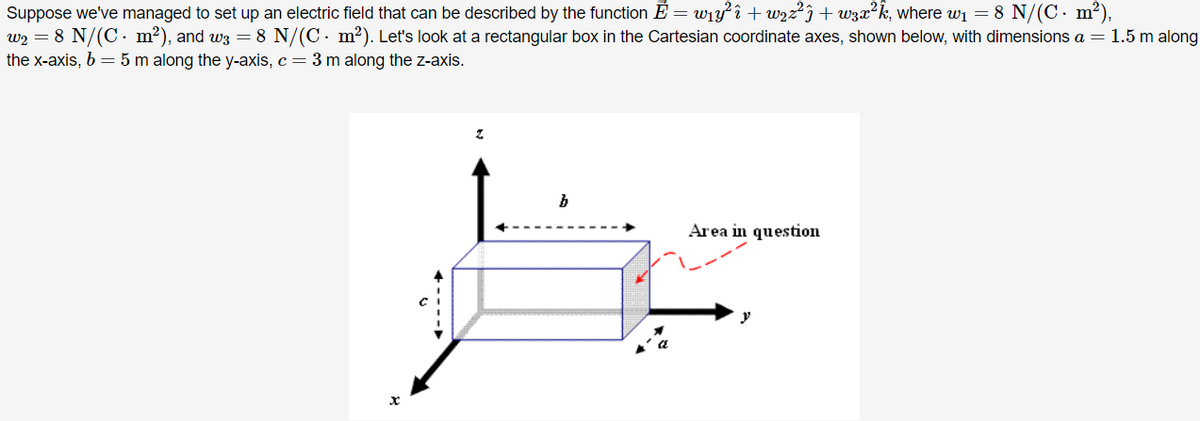Suppose we've managed to set up an electric field that can be described by the function E = wiyî+w2zĵ+w3x²k, where wi = 8 N/(C· m²), w2 = 8 N/(C · m²), and w3 = 8 N/(C· m²). Let's look at a rectangular box in the Cartesian coordinate axes, shown below, with dimensions a = 1.5 m along the x-axis, b = 5 m along the y-axis, c=3 m along the z-axis. Area in question
Suppose we've managed to set up an electric field that can be described by the function E = wiyî+w2zĵ+w3x²k, where wi = 8 N/(C· m²), w2 = 8 N/(C · m²), and w3 = 8 N/(C· m²). Let's look at a rectangular box in the Cartesian coordinate axes, shown below, with dimensions a = 1.5 m along the x-axis, b = 5 m along the y-axis, c=3 m along the z-axis. Area in question
Related questions
Question
What is the magnitude of the electric flux passing through the shaded area?

Transcribed Image Text:Suppose we've managed to set up an electric field that can be described by the function E = wiyî + w2z²i+ w3x²k, where wi = 8 N/(C. m²),
w2 = 8 N/(C• m²), and w3 = 8 N/(C. m²). Let's look at a rectangular box in the Cartesian coordinate axes, shown below, with dimensions a = 1.5 m along
the x-axis, b = 5 m along the y-axis, c= 3 m along the z-axis.
Area in question
Expert Solution
This question has been solved!
Explore an expertly crafted, step-by-step solution for a thorough understanding of key concepts.
This is a popular solution!
Trending now
This is a popular solution!
Step by step
Solved in 5 steps
